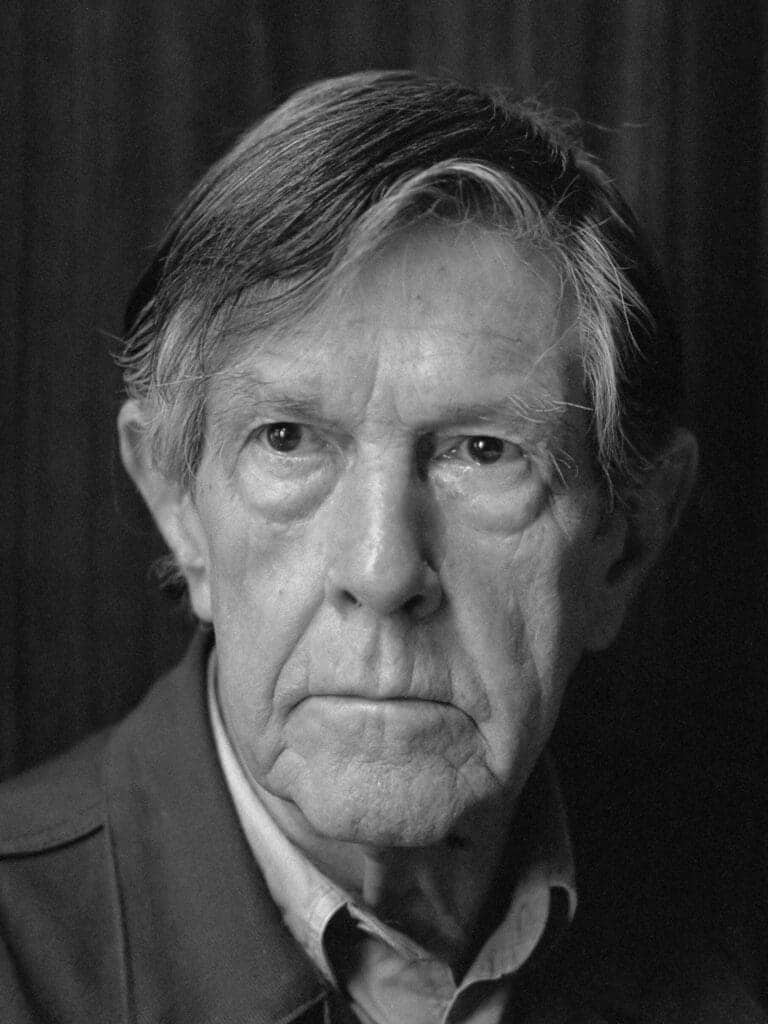
It would be more evident if anyone did not fully grasp the concept. The piece is pure silence. There are no notes, no recitatives. Just silence. At this point, it seems evident that Cage intended some joke, but, betraying all evidence, we can say this is not his purpose. Indeed, the semantics of the composition are pregnant, and without the need for too much verbal instruction, it can guide the listener to a unique and unrepeatable musical experience.
Throughout his career, John Cage tried various forms of experimentation and, like Stockhausen, never felt limited by circumstances. Famous are his sound experiments inside anechoic chambers-small rooms completely soundproofed and wallpapered with sound-reflecting panels, capable of absorbing pressure waves while reflecting only a tiny part of them. In that absolute silence (so driven that it could even lead to mental disturbances if the stay were excessively prolonged), Cage, sitting in the center of the room, listened to his heartbeat, the air flowing into his windpipe, his diaphragm moving rhythmically, his tendons producing small pops and any other sound that would not usually cross the threshold of attention.
The idea for the 4′ 33” piece must certainly have been a consequence of that experience. Indeed, he probably “observed” the world around him in a state of profound stillness and implicitly created a dividing line between a listening subject (himself) and a universe absorbed in “religious” silence. This, strange as it may be, has its physical logic (which, however, cannot be categorized, i.e., limited to sub-systems; too easily – that’s why we would have to make an imaginative effort) that is expressed by the concept of absolute zero.

Fascinated by this concept, John Cage decided to compose a piece lasting 273 seconds (the 15 cents would have been too complicated to replicate), or 4 minutes (60 × 4 = 240 seconds) plus 33 seconds (240 + 33 = 273). This is the most reasonable explanation of the title and duration of the work. But what about the silence? We mentioned the dichotomy between the listener (microcosmic) and the universe in stable equilibrium (macrocosmic). Metaphorically, the above relationship can represent the structure of a theater or concert area, separated into the stage (where the music originates) and the stalls (where the audience enjoys the music).
Therefore, the semantics of 4′ 33” is a reversal of the musician-audience relationship. Those who should emit pressure waves according to the composer’s order and dynamics are silent. Those who should receive them get excited and enjoy them, limiting extraneous noise as much as possible, instead becoming the primary source of all audible sound. Unknowingly (especially the first time), the audience, better if undisciplined, becomes an orchestra without a conductor or score. In this sense, 4′ 33” is pure performing music, as it exists solely and exclusively in its interpretations.
In addition, each interpretation is unique, unrepeatable, and never subject to patterns or schools of thought. Once the performer “frozen at absolute zero” sits in front of the piano, the real orchestra can donate to the musical life every cough, sneeze, whisper, movement in the chairs, scratching, etc. And, in extreme cases, such as in a stadium, the crowd may perform in the production of even more varied and consistent noise. Any sound/noise produced by bystanders is welcome (as opposed to the performer, whose stasis is an unavoidable factor). There could very well be someone who plays more music on their smartphone, those who shout, and why not, even those who decide to throw objects on stage to liven up the atmosphere.

Just as in front of a monochrome by Mario Schifano and a cut by Lucio Fontana, it is up to the observer to fill in the gaps. The listeners of 4′ 33” are also called upon to participate. Even an unsuspecting polite audience waiting in “silence” for the performance to begin would be found to be unwitting performers, as the only system at “absolute zero” is located on the stage. Everything else is living matter and, therefore, also noisy. The only difference between a coughing fit during an Arturo Benedetti Michelangeli concert and a 4′ 33” performance is that, in the former case, it would be an annoying disturbance. At the same time, the latter would be a structural and purely improvisational part of the work.
At this point, I only want to invite you to listen to the composition with commitment and without distractions. Your role is no longer what you are used to. From the universe to absolute zero, where a crystallized orchestra watches with glassy eyes, one expects to enjoy an unparalleledly unique work of art: one of the infinite 4′ 33” completions. Do not disappoint those who have boundless confidence in your countless expressive possibilities!

